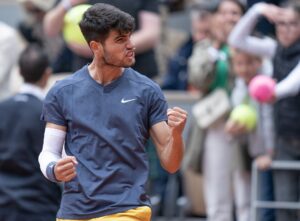Roger Federer has a terrible draw at the Mutua Madrid Open. He has potential matches against the three most dangerous clay court players in the world: a possibly quarterfinal against Dominic Thiem, a possible semifinal against Novak Djokovic, and a possible final against Rafael Nadal. His first match against Richard Gasquet, however, is a perfect opportunity to test out his clay court game.
Roger Federer Returns to Clay Against Richard Gasquet
Richard Gasquet has only won two matches against Federer in their nineteen meetings, and has not beaten the Swiss since 2011. He hasn’t won a set since then either.
Federer matches up well against Gasquet who, despite having a world-class one-handed backhand, does not have any significant weapons with which to hurt Federer. Gasquet does not generate effortless pace like Juan Martin del Potro, he does not cover the court at astounding speed like Gael Monfils, and his serve, far from being a reliable shot he can use to get out of trouble, is close to a liability.
Federer’s mental edge against Gasquet has its roots in his feeling that Gasquet does not have a way to force his game on Federer. Gasquet’s performance in the 2015 US Open quarterfinals was a stark example of his inability to force Federer out of his comfort zone. Federer played some of his freest tennis in that match, coming to the net often, smacking down return winners, and dropping only seven games en route to a straight sets victory.
Federer 2015 vs Federer 2019
Embed from Getty ImagesFederer played a few unremarkable matches on clay in 2016 and later revealed he was in discomfort during all of them, so the last data point for his level pre-injury is his 2015 record. Federer reached the finals of Rome where he lost to Djokovic, lost early in Monte Carlo (Monfils) and Madrid (Kyrgios), won his first clay title since 2012 at the ATP 250 in Istanbul defeating clay court specialist Pablo Cuevas in the final, and made the quarterfinals of the French Open where he was blown off the court by Stan Wawrinka.
Federer’s hard court achievements in 2015 and 2019 are comparable so it is fair to assume that, unless there has been a huge drop off in his movement (unlikely) he will do as well as, if not better than, he did in 2015 on clay. His newfound commitment to total aggression may also serve him well on clay, especially in the slightly faster Madrid conditions which are close to those of a slow hard court.
Federer’s vulnerabilities on clay in 2015 are the same he has today: big hitters, great movers, and clay court specialists. Gasquet is none of these so Federer will have a good chance to play and win at least one match before his true tests begin.
Main photo:






